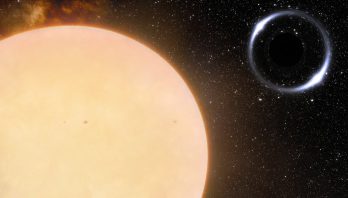
NOIRLab: Astronomers Discover Closest Black Hole to Earth
Black holes are the most extreme objects in the Universe. Supermassive versions of these unimaginably dense objects likely reside at ...
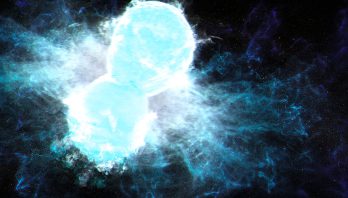
STScI: How Nasa’s Roman Telescope Will Scan for Show Stopping Explosions
What happens when the densest, most massive stars – that are also super small – collide? They send out brilliant ...
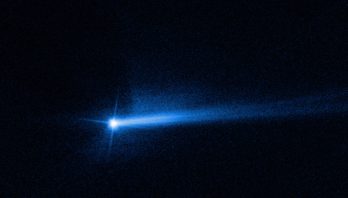
STScI: NASA’s Hubble Spots Twin Tails in New Image After DART Impact
Two tails of dust ejected from the Didymos-Dimorphos asteroid system are seen in new images from NASA’s Hubble Space Telescope, ...
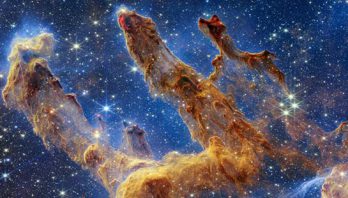
STScI: NASA’s Webb Takes Star-Filled Portrait of Pillars of Creation
NASA’s James Webb Space Telescope has captured a lush, highly detailed landscape – the iconic Pillars of Creation – where ...
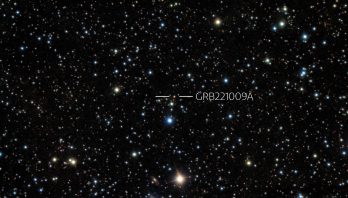
NOIRLab: Record-Breaking Gamma-Ray Burst Possibly Most Powerful Explosion Ever Recorded
In the early-morning hours of 14 October 2022, astronomers using the Gemini South telescope in Chile operated by NSF’s NOIRLab ...
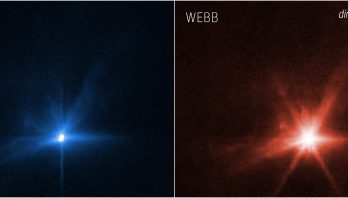
STScI: Webb, Hubble Capture Detailed Views of DART Impact
Two of NASA’s Great Observatories, the James Webb Space Telescope and the Hubble Space Telescope, have captured views of a ...
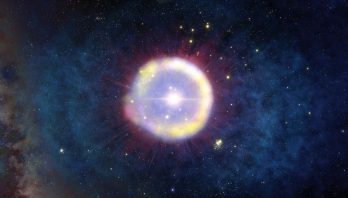
NOIRLab: Potential First Traces of the Universe’s Earliest Stars
Astronomers may have discovered the ancient chemical remains of the first stars to light up the Universe ...
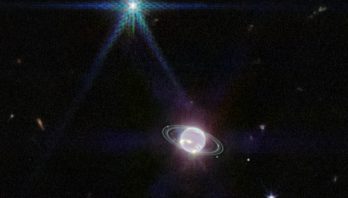
STScI: New Webb Image Captures Clearest View of Neptune’s Rings in Decades
NASA’s James Webb Space Telescope shows off its capabilities closer to home with its first image of Neptune. Not only ...
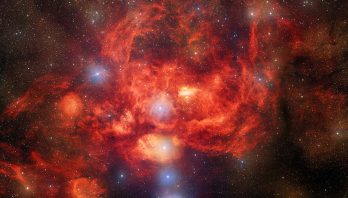
NOIRLab: Dark Energy Camera Captures Bright, Young Stars Blazing Inside Glowing Nebula
NOIRLab has released a breathtaking image of the star-forming Lobster Nebula (NGC 6357), which is located about 8000 light-years from ...
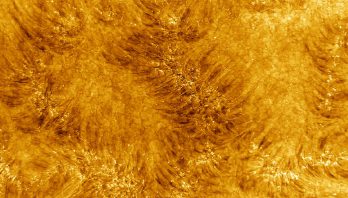
NSO: U.S. National Science Foundation Celebrates the Inauguration of its Daniel K. Inouye Solar Telescope
On August 31, 2022, a delegation of NSF leaders, congressional dignitaries, and members of both the scientific and Native Hawaiian ...
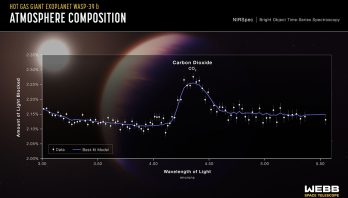
STScI: NASA’s Webb Detects Carbon Dioxide in Exoplanet Atmosphere
NASA’s James Webb Space Telescope has captured the first clear evidence for carbon dioxide in the atmosphere of a planet ...

Unexpected details leap out in sharp new James Webb Space Telescope images of Jupiter
The latest images of Jupiter from the James Webb Space Telescope (JWST) are stunners ...
